-
Happy Birthday ICMag! Been 20 years since Gypsy Nirvana created the forum! We are celebrating with a 4/20 Giveaway and by launching a new Patreon tier called "420club". You can read more here.
-
Important notice: ICMag's T.O.U. has been updated. Please review it here. For your convenience, it is also available in the main forum menu, under 'Quick Links"!
You are using an out of date browser. It may not display this or other websites correctly.
You should upgrade or use an alternative browser.
You should upgrade or use an alternative browser.
Amber in 15 minutes from cutting
- Thread starter jump117
- Start date
Ciao StRa! Hoi!
The favorite is my self-made one hit wonder pipe, it provides the delivery process more likes evaporation than smoking,
the pipe cup is made of metal elbow (ex pneumatic part), chamber inner size - D=6mm (1/4"), L=12mm (1/2"),

to enlarge the surface for evaporation, I use a metal gauze not as a screen but twisted to a dense roll D=6mm, L=7-9mm,
when the gauze roll is inserted into pipe chamber, it leaves an empty space above to place a piece of amber of half rice grain size.
to separate a grain of amber from a lump I touch it with a lighter flame and pinch the softened part off with thumb and index finger,
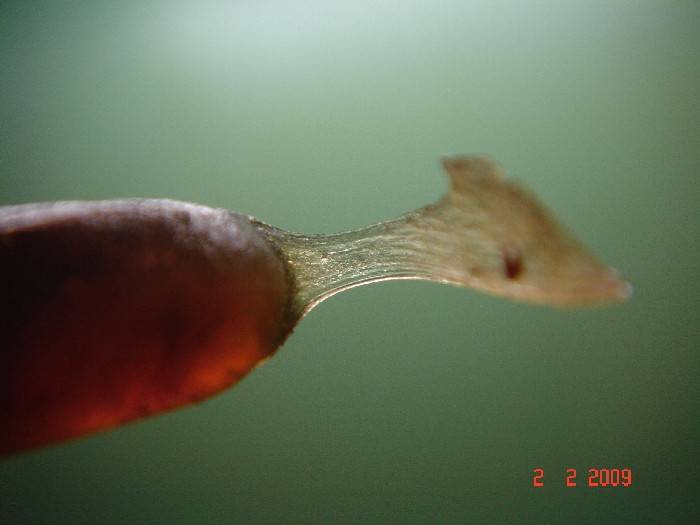
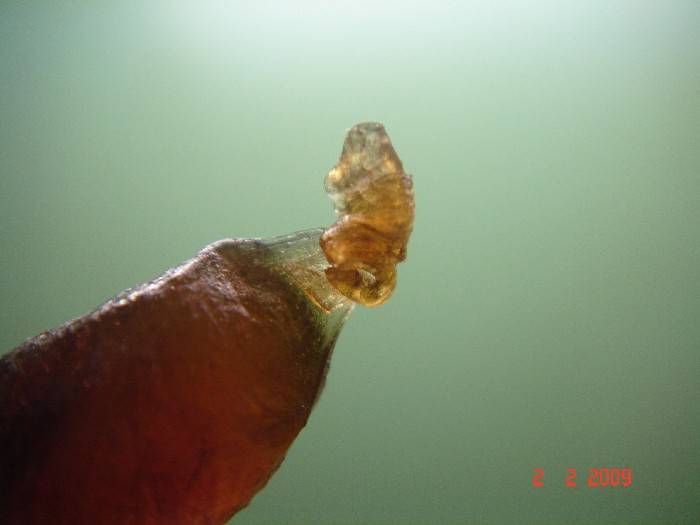
When I put a flame to that it melts – bubbling shortly and disappears without residue.

Excessive condensates in the catcher made of two thin tubes (ex telescopic antenna parts),

the inner tube is dense inserted into the elbow, the outer is connected to flexible 6mm hose,
all the hot parts are covered with the threaded wood handle,
the hose is D 6mm L 30cm (1 ft) to provide a comfort watching the flame action on amber.
Un saluto
The favorite is my self-made one hit wonder pipe, it provides the delivery process more likes evaporation than smoking,
the pipe cup is made of metal elbow (ex pneumatic part), chamber inner size - D=6mm (1/4"), L=12mm (1/2"),

to enlarge the surface for evaporation, I use a metal gauze not as a screen but twisted to a dense roll D=6mm, L=7-9mm,
when the gauze roll is inserted into pipe chamber, it leaves an empty space above to place a piece of amber of half rice grain size.
to separate a grain of amber from a lump I touch it with a lighter flame and pinch the softened part off with thumb and index finger,
When I put a flame to that it melts – bubbling shortly and disappears without residue.

Excessive condensates in the catcher made of two thin tubes (ex telescopic antenna parts),

the inner tube is dense inserted into the elbow, the outer is connected to flexible 6mm hose,
all the hot parts are covered with the threaded wood handle,
the hose is D 6mm L 30cm (1 ft) to provide a comfort watching the flame action on amber.
Un saluto
Mr. Hugeblunts
Member
a) getting anhydrous ethanol, which is expensive and hard to find. Problem is you still have the water from your wash which needs to be dealt with.
To make anhydrous ethanol (or anhydrous anything just about)
1. Bake or microwave MgSO4 (epsom salts) until all the moisture is gone
2. Grind up into a fine powder
3. Add to solvent, shake around (cant add too much)
4. pour ethanol through filter to yield 98%+ pure ethanol
Mr. Hugeblunts
Member
I just tried this... oh my god. Never smoked BHO before but I've had top quality Moroccan hashish in spain and this compares to it but is better.
I took 1 bud about the length of my thumb and broke it into 3 pieces. I put this in a jar and swished some NAPTHA (VM&P) around, aspirated and dried.
Yield was ROCK HARD, like real amber. Color was amber as well.
To improve efficiency but possibly add contaminates, one could use a coffee press.
This would squeeze the solvent out of your buds and also dissolve some residual resin stalks
I took 1 bud about the length of my thumb and broke it into 3 pieces. I put this in a jar and swished some NAPTHA (VM&P) around, aspirated and dried.
Yield was ROCK HARD, like real amber. Color was amber as well.
To improve efficiency but possibly add contaminates, one could use a coffee press.
This would squeeze the solvent out of your buds and also dissolve some residual resin stalks
When you squeeze, you get solution from a soaked epidermis and inner parts of a plant body,
they are the sources of unwanted contaminates, squeezed solution is colored, it gives amount of smokeable soft brown mass,
but little resin is in this part and on the whole this squeezed part is the second or third grade extract,
I only do this in the end of the last washing run, never mix with previous runs.
Disc cells on the top of a stalk are the border between resin and non-resin parts of a trichome,
there is no resin in a stalks, only heads consist resin.
they are the sources of unwanted contaminates, squeezed solution is colored, it gives amount of smokeable soft brown mass,
but little resin is in this part and on the whole this squeezed part is the second or third grade extract,
I only do this in the end of the last washing run, never mix with previous runs.
Disc cells on the top of a stalk are the border between resin and non-resin parts of a trichome,
there is no resin in a stalks, only heads consist resin.
no resin in stalks at all?
Hi Hashmasta-Kut, glad to see you in the topic!
Yes, no resin in stalks at all, I’ve learned this from:
THC (TETRAHYDROCANNABINOL) ACCUMULATION IN GLANDS OF CANNABIS (CANNABACEAE)
Paul G. Mahlberg and Eun Soo Kim, Department of Biology, Indiana University, Bloomington, IN USA; and Department of Biology, Konkuk University, Seoul, Korea
Quotes:
The purposes of this study are: a) to determine where cannabinoids are localized in the plant, and in which specific tissue, and b) to determine where within the cell or tissue cannabinoids are localized.
…
There are two types of glands active in cannabinoid secretion on female plants (Figs. 1, 2):
a. Capitate sessile - most common in that it occurs on stems, leaves and bracts.
b. Capitate stalked - develops only after flower formation, and occurs especially on the bracts subtending a flower and seed.
…
The gland consists of disc cells with their cytoplasm and a non-cellular intrawall secretory cavity. We examined the contents of this secretory cavity specifically to determine if cannabinoids occur in it.
…
Summary:
a) Capitate stalked glands contained more THC (and total cannabinoids) than capitate sessile glands.
b) THC, and total cannabinoid, quantity in both gland types can vary during the year, and can decrease to very low levels.
c) Cannabinoids decrease with aging of glands.
d) Cannabinoids occur in the secretory cavity of the gland.
…
It is pertinent to examine the organization of the disc cells because all contents in this cavity must be derived from the disc cells. Cannabinoids, or their precursors, are secretions from these cells. Another major group of secreted compounds are the terpenes (monoterpenes and sesquiterpenes). Monoterpenes are the more abundant of the two. Terpenes compose the "essential oils"; they contribute to the odors of the plant, and are sticky in character, as evident when one touches the plant. Different combinations of terpenes in different strains contribute to odor differences among the strains. Cannabinoids, and THC, are odorless to most humans.
End of Quotes.
Yes, no resin in stalks at all, I’ve learned this from:
THC (TETRAHYDROCANNABINOL) ACCUMULATION IN GLANDS OF CANNABIS (CANNABACEAE)
Paul G. Mahlberg and Eun Soo Kim, Department of Biology, Indiana University, Bloomington, IN USA; and Department of Biology, Konkuk University, Seoul, Korea
Quotes:
The purposes of this study are: a) to determine where cannabinoids are localized in the plant, and in which specific tissue, and b) to determine where within the cell or tissue cannabinoids are localized.
…
There are two types of glands active in cannabinoid secretion on female plants (Figs. 1, 2):
a. Capitate sessile - most common in that it occurs on stems, leaves and bracts.
b. Capitate stalked - develops only after flower formation, and occurs especially on the bracts subtending a flower and seed.
…
The gland consists of disc cells with their cytoplasm and a non-cellular intrawall secretory cavity. We examined the contents of this secretory cavity specifically to determine if cannabinoids occur in it.
…
Summary:
a) Capitate stalked glands contained more THC (and total cannabinoids) than capitate sessile glands.
b) THC, and total cannabinoid, quantity in both gland types can vary during the year, and can decrease to very low levels.
c) Cannabinoids decrease with aging of glands.
d) Cannabinoids occur in the secretory cavity of the gland.
…
It is pertinent to examine the organization of the disc cells because all contents in this cavity must be derived from the disc cells. Cannabinoids, or their precursors, are secretions from these cells. Another major group of secreted compounds are the terpenes (monoterpenes and sesquiterpenes). Monoterpenes are the more abundant of the two. Terpenes compose the "essential oils"; they contribute to the odors of the plant, and are sticky in character, as evident when one touches the plant. Different combinations of terpenes in different strains contribute to odor differences among the strains. Cannabinoids, and THC, are odorless to most humans.
End of Quotes.
Ciao StRa! Hoi!
The favorite is my self-made one hit wonder pipe, it provides the delivery process more likes evaporation than smoking,
the pipe cup is made of metal elbow (ex pneumatic part), chamber inner size - D=6mm (1/4"), L=12mm (1/2"),

to enlarge the surface for evaporation, I use a metal gauze not as a screen but twisted to a dense roll D=6mm, L=7-9mm,
when the gauze roll is inserted into pipe chamber, it leaves an empty space above to place a piece of amber of half rice grain size.
to separate a grain of amber from a lump I touch it with a lighter flame and pinch the softened part off with thumb and index finger,


When I put a flame to that it melts – bubbling shortly and disappears without residue.

Excessive condensates in the catcher made of two thin tubes (ex telescopic antenna parts),

the inner tube is dense inserted into the elbow, the outer is connected to flexible 6mm hose,
all the hot parts are covered with the threaded wood handle,
the hose is D 6mm L 30cm (1 ft) to provide a comfort watching the flame action on amber.
Un saluto
yeah Jump!
Thanks for show us your super pipe......you are so ingenious......dou you speak italian as well????
have a nice monday!
Ciao ciao
hi jump. this information you posted does not seem to indicate 0 resin in the stalks. it say there is more in the stalked glands than there is in sessile. it does not say there is no resin in the stalks, just that the resin is formed in the secretory cavity of the gland. if that is the cap, then i guess you are correct in your deduction, but i am not sure where the secretory gland is for sure...is it only the cap region? its just that it seems that some oil can be derived from just stalks. not much, but a very little.
Hi Hashmasta-Kut, glad to see you in the topic!
Yes, no resin in stalks at all, I’ve learned this from:
THC (TETRAHYDROCANNABINOL) ACCUMULATION IN GLANDS OF CANNABIS (CANNABACEAE)
Paul G. Mahlberg and Eun Soo Kim, Department of Biology, Indiana University, Bloomington, IN USA; and Department of Biology, Konkuk University, Seoul, Korea
Quotes:
…
The purposes of this study are: a) to determine where cannabinoids are localized in the plant, and in which specific tissue, and b) to determine where within the cell or tissue cannabinoids are localized.
…
There are two types of glands active in cannabinoid secretion on female plants (Figs. 1, 2):
a. Capitate sessile - most common in that it occurs on stems, leaves and bracts.
b. Capitate stalked - develops only after flower formation, and occurs especially on the bracts subtending a flower and seed.
…
The gland consists of disc cells with their cytoplasm and a non-cellular intrawall secretory cavity. We examined the contents of this secretory cavity specifically to determine if cannabinoids occur in it.
…
Summary:
a) Capitate stalked glands contained more THC (and total cannabinoids) than capitate sessile glands.
b) THC, and total cannabinoid, quantity in both gland types can vary during the year, and can decrease to very low levels.
c) Cannabinoids decrease with aging of glands.
d) Cannabinoids occur in the secretory cavity of the gland.
…
It is pertinent to examine the organization of the disc cells because all contents in this cavity must be derived from the disc cells. Cannabinoids, or their precursors, are secretions from these cells. Another major group of secreted compounds are the terpenes (monoterpenes and sesquiterpenes). Monoterpenes are the more abundant of the two. Terpenes compose the "essential oils"; they contribute to the odors of the plant, and are sticky in character, as evident when one touches the plant. Different combinations of terpenes in different strains contribute to odor differences among the strains. Cannabinoids, and THC, are odorless to most humans. (End of Quotes)
I coloured and added two ICMag photos in the original diagram from - http://www.hempreport.com/issues/17/malbody17.html
THC (TETRAHYDROCANNABINOL) ACCUMULATION IN GLANDS OF CANNABIS (CANNABACEAE)
Paul G. Mahlberg and Eun Soo Kim,
Department of Biology, Indiana University, Bloomington, IN USA; and
Department of Biology, Konkuk University, Seoul, Korea
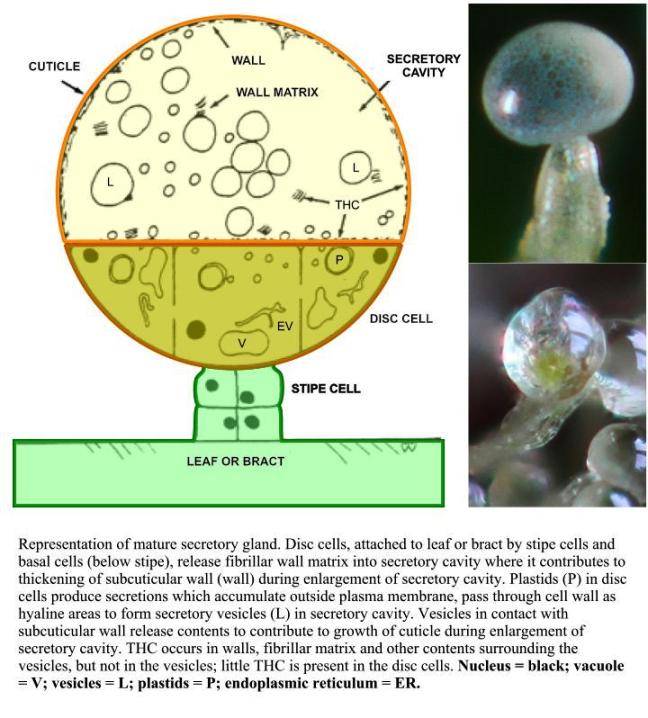
The perfect pictures of glands anatomy posted by Dr.Know
in the thread - Trichomes Galore and EXTRAordinarily colorful herbs
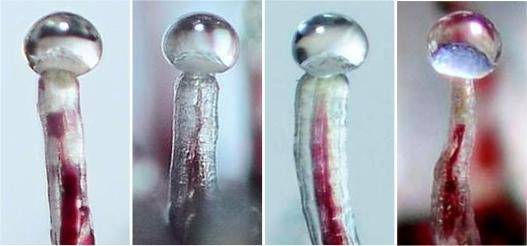
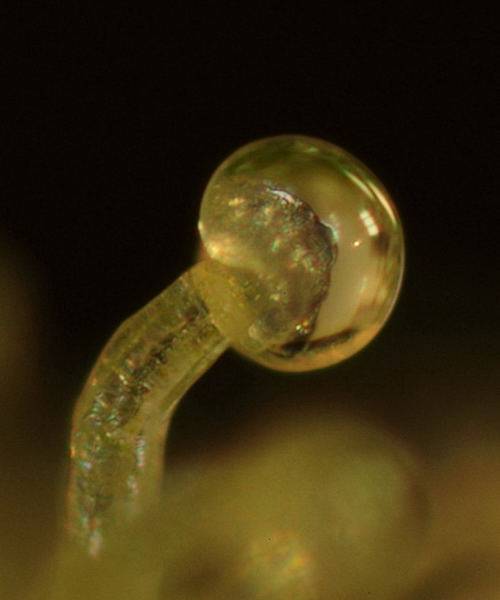
THC (TETRAHYDROCANNABINOL) ACCUMULATION IN GLANDS OF CANNABIS (CANNABACEAE)
Paul G. Mahlberg and Eun Soo Kim,
Department of Biology, Indiana University, Bloomington, IN USA; and
Department of Biology, Konkuk University, Seoul, Korea
The perfect pictures of glands anatomy posted by Dr.Know

in the thread - Trichomes Galore and EXTRAordinarily colorful herbs

the term QW-EtOH
the term QW-EtOH
QW-EtOH. I never seen this abbreveature before the discussion on CO2 extraction.
Good one, thank you.
the term QW-EtOH
QW-EtOH. I never seen this abbreveature before the discussion on CO2 extraction.
Good one, thank you.
right, and probably there is something in the water,
water itself is not indeffirent to extraction, the less the better,
to make it better you may distil 151 to azeotrope 190
or dehydrate it like Mr. Hugeblunts teaches few posts back:
water itself is not indeffirent to extraction, the less the better,
to make it better you may distil 151 to azeotrope 190
or dehydrate it like Mr. Hugeblunts teaches few posts back:
To make anhydrous ethanol (or anhydrous anything just about)
1. Bake or microwave MgSO4 (epsom salts) until all the moisture is gone
2. Grind up into a fine powder
3. Add to solvent, shake around (cant add too much)
4. pour ethanol through filter to yield 98%+ pure ethanol
Fresh buds material was extracted by ethanol after the collection of the fem seeds off them .
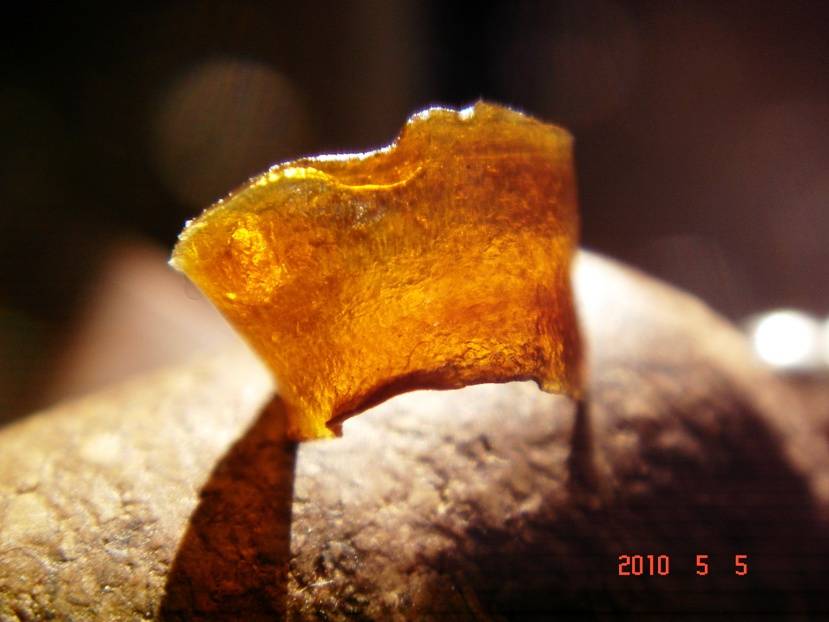
Of course this led to the plural damages of epidermis, which badly influenced the quality of the extract.
I manually reaped the seeds off them, all the clusters were rumpled after that and didn't need pre-wash trimming
EtOH extracted them in 3+ minutes and got an extract of a very suitable dense, its not sticky nor shatter brittle,
it could be brighter if I had butane this time to primary extraction like in the case of ladyboys absolute.
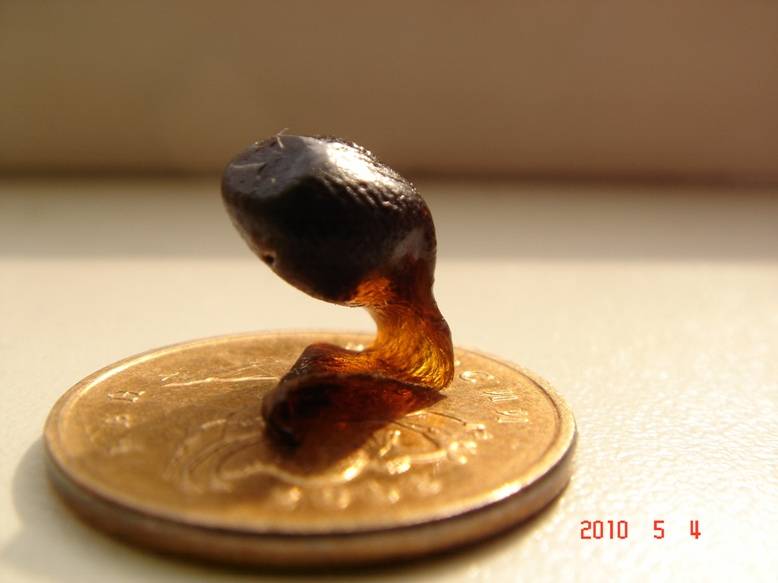
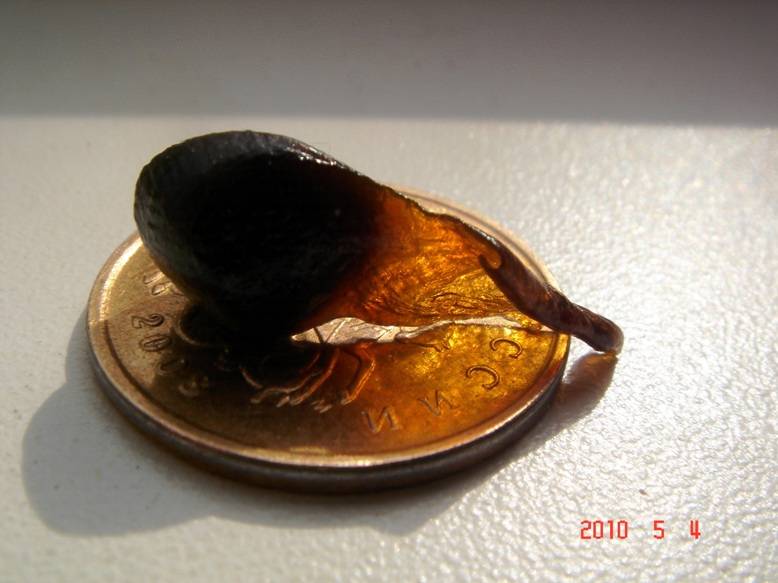

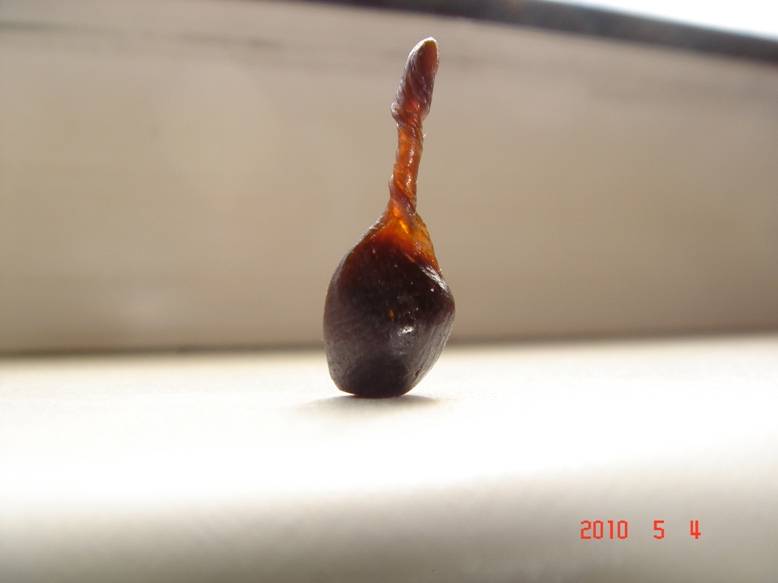
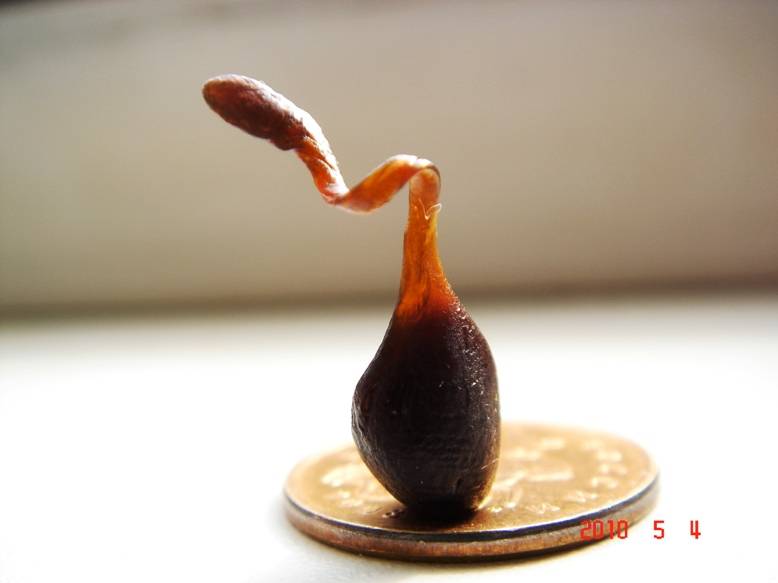
...
Of course this led to the plural damages of epidermis, which badly influenced the quality of the extract.
D
dramamine
hey Jump, this is a really cool thread. I gotta try your amber technique...thanks and keep on!
strictlybongz
Member
alot of good info in this thread, some of it has been expanded upon but some killer foundational knowledge in here.
sLai*kRoLa
Member
Jump, you're the man! Arigato, sensei!
Thanks Jump, always superb information.


